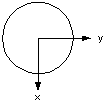 All RF Cafe Quizzes make great fodder for
employment interviews for technicians or engineers - particularly those who are
fresh out of school or are relatively new to the work world. Come to think of it,
they would make equally excellent study material for the same persons who are going
to be interviewed for a job. Bonne chance, Viel Glück, がんばろう,
buena suerte, удачи, in bocca al lupo, 행운을 빕니다,
ádh mór, בהצלחה, lykke til, 祝你好運.
Well, you know what I mean: Good luck! All RF Cafe Quizzes make great fodder for
employment interviews for technicians or engineers - particularly those who are
fresh out of school or are relatively new to the work world. Come to think of it,
they would make equally excellent study material for the same persons who are going
to be interviewed for a job. Bonne chance, Viel Glück, がんばろう,
buena suerte, удачи, in bocca al lupo, 행운을 빕니다,
ádh mór, בהצלחה, lykke til, 祝你好運.
Well, you know what I mean: Good luck!
Click here for the complete list of
RF Cafe Quizzes.
Note: Some material based on books have quoted passages.
The subject of Quiz #16 is Antennas. You
don't need to be an antenna expert to score well, but if you do or plan to work
with antennas and cannot answer a question like, "What does dBi, the most often
used unit for antenna gain (or directivity), stand for?," then maybe it is time
for some review.
1. What does dBi, the most often used unit for antenna gain (or directivity),
stand for?
a) Decibels of isolation
b) Isometric radiation in decibels
c) Decibels of gain relative to an isotropic radiator
d) Intrinsic gain in decibels
2. For which region of space does antenna gain normally apply?
a) Near field
b) Far field
c) At the feed point
d) Everywhere


Elevation Pattern Azimuth Pattern
3. For which type of antenna does the pattern to the right describe?
a) Parabolic
b) Yagi
c) 1/2-wave dipole
d) 1/4-wave vertical whip
4. What is the free space impedance that an antenna "sees?"
a) 50 Ω
b) 75 Ω
c) 16p Ω (≈50 Ω)
d) 120p Ω (≈377 Ω)
5. What is the name given to the point where the RF input signal interfaces to
the antenna?
a) ICP (input connection point)
b) Feed-point
c) BNC connector
d) N connector
6. Where is the approximate transition point between near field and far field?
a) λ / (2p)
b) λ
c) 5λ
d) 10λ
7. What is an isotropic radiator?
a) An antenna that radiates equally in all directions
b) An antenna with equal dimensions
c) An antenna designed to broadcast in the troposphere
d) None of the above
8. Which type of antenna would typically have the highest directivity?
a) 1/4-wave whip
b) Folded dipole
c) Yagi
d) Parabolic
9. On a center-fed 1/2-wave dipole, where is the voltage potential the highest?
a) In the center
b) At the tips
c) Equal everywhere
d) Nowhere - dipoles operate on current
10. Yagi antennas are constructed of which three types of elements?
a) Transmitter, receiver, and transceiver
b) Underdriven, driven, and overdriven
c) Reflector, driven, and director
d) Aluminum, iron, and magnesium
Need some help? Click here for the answers and explanations.
Posted July 12, 2022
(updated from original post on
2/12/2005)
|











